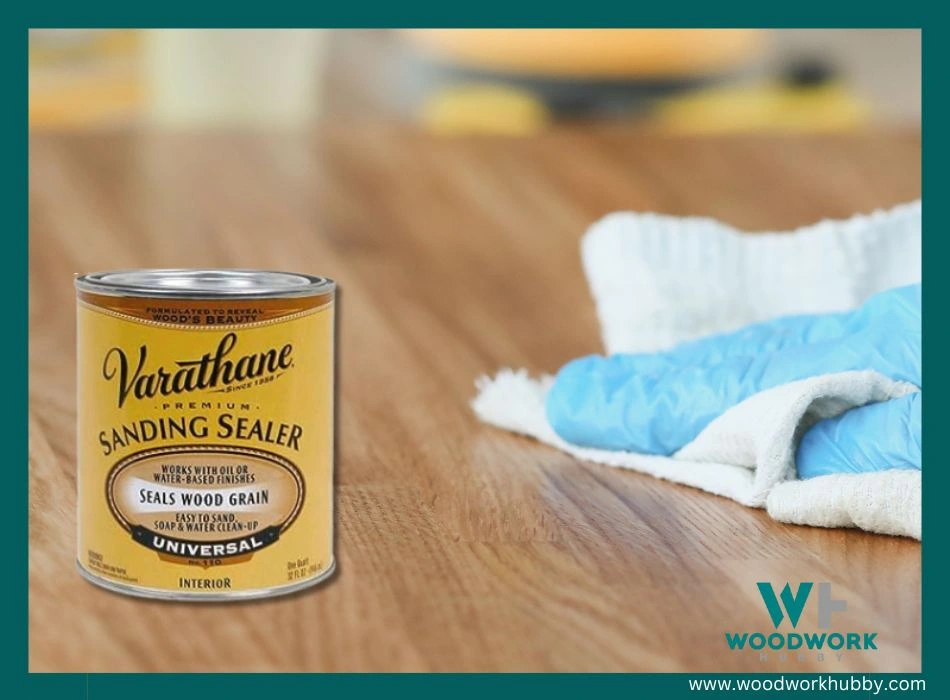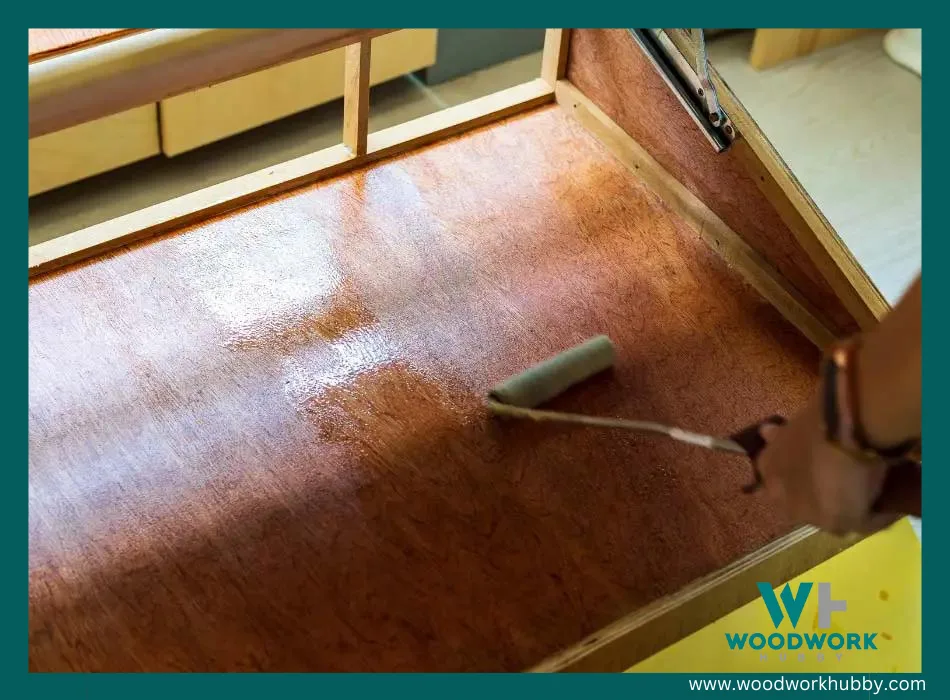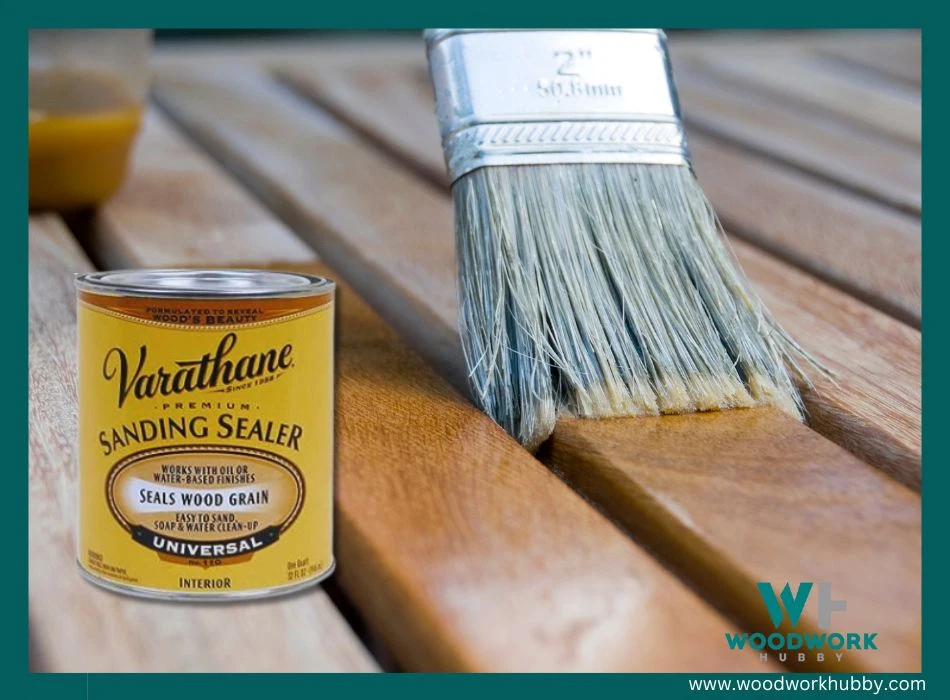Sanding sealer protects the surface of wood furniture, but it also provides a smooth surface that’s ideal for paints and finishes. But oiling wooden furniture is one of the best ways to waterproof the wood and keep it looking its best. This begs the question, “Can you put Danish oil over the sanding sealer?”
You can put Danish oil over a sanding sealer, though it’s best to apply oil before a sanding sealing. You also won’t want to let the oil sit on the sealant. Danish oil contains mineral spirits, a solvent that can strip away sanding sealer.
This article will explore whether you can put Danish oil over sanding sealer. We’ll also discuss the best ways to use these wood sealants, ensuring that your wooden furniture and items enjoy the longest lifespan and look great.
Can You Use Danish Oil Over a Sanding Sealer?

You can use Danish oil over a sanding sealer, but only if the sealer is a natural oil, polyurethane, or lacquer finish. Additionally, Danish oil can strip away some types of sanding sealer, so it’s crucial to use it sparingly and avoid letting it sit on sealed wood surfaces.
Understanding Danish Oil Ingredients and Their Interactions
Before applying Danish oil to sealed wood, you’ll want to familiarize yourself with the common ingredients used to make Danish oil. After all, unlike other types of wood oils, Danish oil is a combination of elements, each of which has specific interactions with sanding sealers.
Danish oil is typically made of:
- Linseed oil
- Tung oil
- Mineral spirits
- Synthetic resin
Linseed oil and Tung oil are naturally derived wood oils often applied to unfinished wood to seal and protect it. These oils can also enrich and darken the wood’s natural color.
Because they’re oils, they can fail to penetrate sanding sealers made of wax or shellac.
Additionally, mineral spirits are solvents. Solvents are often used to remove dried substances like paint, varnish, and sanding sealant. Consequently, applying Danish oil to a sealed piece of wood can remove the uppermost coat of sealant.
Refer to the chart below to learn more about the surfaces suitable for Danish oil applications.
| Type of Surface | Can You Use Danish Oil? | Precautions |
|---|---|---|
| Unfinished wood | Yes | None |
| Lacquer sealant | No | N/A |
| Polyurethane sealant | Maybe | Use a minimal amount of Danish oil and do not let it sit on the sealant. |
| Wax sealant | No | N/A |
| Shellac sealant | No | N/A |
Can You Put an Oil Finish Over Sanding Sealer?
You can put a wood oil finish over sanding sealer liquid, but only if the sealer is penetrable and applied in a thin layer. For example, oil won’t penetrate a wax or shellac sanding sealer, so you won’t want to use oil finishes on these sealants.

If you’d like to oil wood covered in a sanding sealer, it’s often best to sand away most of the sealant before applying oil. However, you might also be able to use Danish oil to remove some types of sealants, as mineral spirits can partially dissolve sealants.
So, if you’d like to oil a piece of wood with Danish oil, but it’s covered in a sanding sealer ish oil sit on the sealant surface can help you strip away some of the sealant finish.
Still, you’ll likely need a rough-bristled brush or piece of steel wool to get rid of most of the sanding sealant, especially when working with shellac or lacquer sealants.
Should I Use Sanding Sealer Before Oil?
You shouldn’t use a sanding sealer before oil, because in most cases, you’ll want to apply wood oil before applying a sanding sealer. Most sanding sealers form hard, impenetrable layers when they dry, making it impossible for wood oils to reach the wood’s surface.
Remember, wood oils are designed to penetrate unfinished wood surfaces, providing a water-resistant layer that prevents decay. These oils can also improve the look of wood, acting as paint-free stains.

Consequently, you may not need to apply a sanding sealer after oiling your wood. Attempting to oil wood covered in sanding sealer can be challenging, as the oil may not penetrate through the sealant.
For these reasons, it’s best to apply wood oil and let it dry before covering the wood with a sanding sealer. You might also want to apply several layers of oil before applying a sanding sealer, as it typically takes multiple applications for wood oil to penetrate wooden items fully.
Can You Stain on Top of Sanding Sealer?
You can stain on top of a sanding sealer, but this can be difficult, depending on your chosen sealer. For example, stains spread evenly and penetrate wood sealed with oil. However staining a lacquered piece of wood can be challenging, if not impossible.

If you’d like to seal a piece of wood before staining it, you’ll want to use a natural oil sealant like Tung oil or linseed oil.
You’ll also want to let the oil dry completely before applying a stain. When you let the wood oil layers dry, the wood stain can penetrate the wood’s surface instead of beading at the top.
Can You Use Sanding Sealer Before Staining?
You can use sanding sealer before staining wood, but you’ll want to use a small amount. Partially sealing the wood before staining ensures that the stain partially soaks into the upper layers of the wood, providing a uniform stain penetration that dries quickly.
It’s also crucial to consider the type of sanding sealer you’d like to use.
For example, staining wood that’s covered in lacquer is tricky. You’ll probably need to remove the lacquer surface entirely before staining.
The best sanding sealers that accept staining liquids are natural oils. Additionally, woods sealed with polyurethane respond well to gel-based stains. If your wooden item or flooring has a wax seal, you need to scrub away that wax before staining.
Conclusion – Can You Put Danish Oil Over Sanding Sealer?
While you might be able to put Danish oil over sanding sealer, it’s often better to apply Danish oil to unfinished wood surfaces before covering them in sealant. Doing so ensures that the oil penetrates the wood, preventing it from pooling atop the sealer and forming sticky puddles.
That said, you can apply a stain over a sanding sealer. So, if you’re looking to paint a piece of sealed wood, the sealer won’t be an issue.




